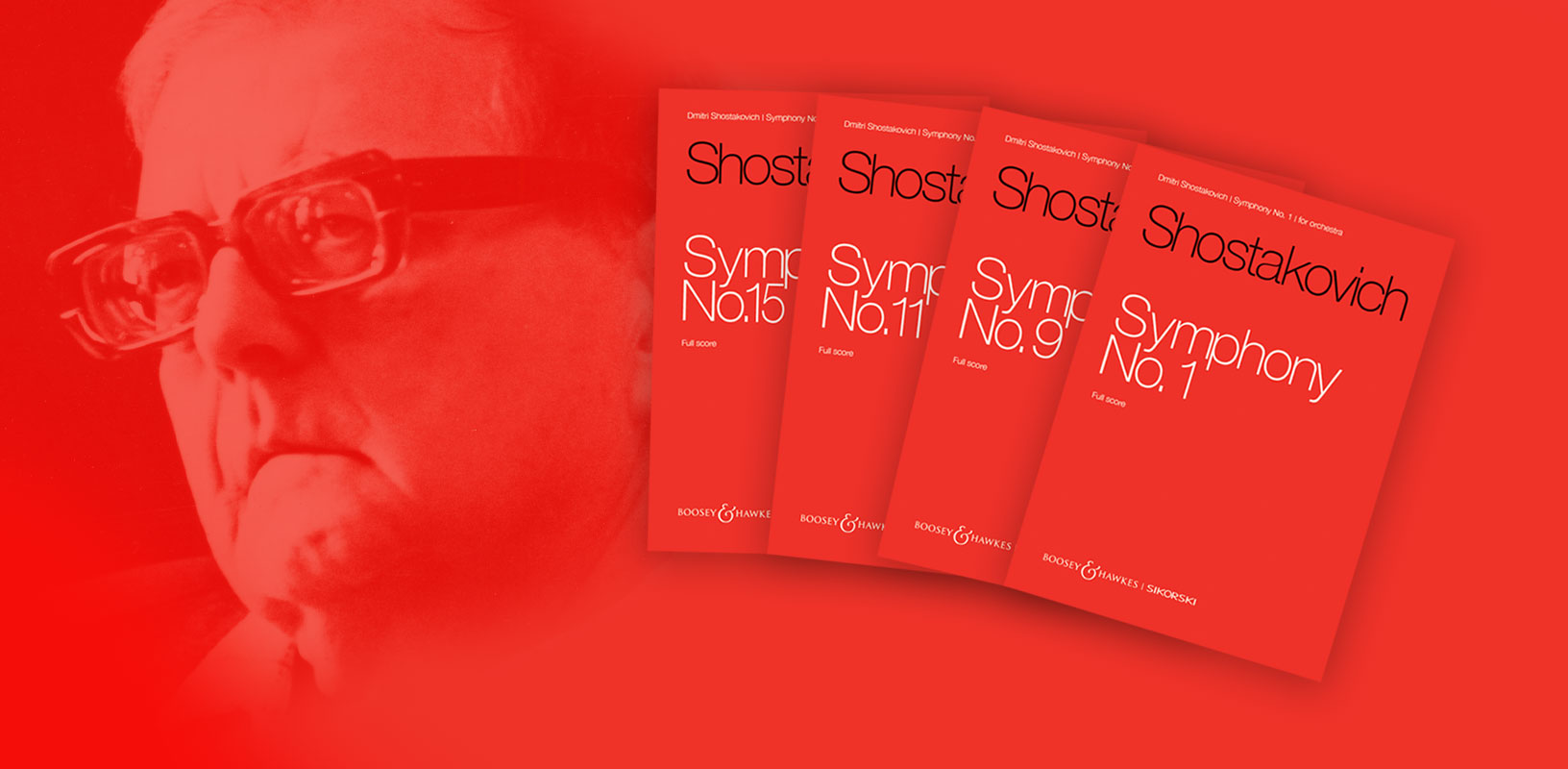New Shostakovich symphony edition from Boosey & Hawkes and Sikorski

October sees the launch of a new revised and corrected edition of all 15 Shostakovich symphonies, bearing fruit from the merging of publishers Boosey & Hawkes and Sikorski. The first group of four releases spans the composer’s life from his youthful Symphony No.1 through Nos.9 and 11 to his enigmatic farewell with No.15.
Boosey & Hawkes and Sikorski are pleased to announce the launch of a revised and corrected new edition of all 15 symphonies by Dmitri Shostakovich, which is due to be completed in readiness for the 50th anniversary of the composer’s death in 2025. The first four volumes in the edition, Nos.1, 9, 11 and 15, are released as large format study scores for optimal legibility. All scores and the related orchestral parts have been newly computer typeset, and the orchestral parts are also compatible for performance use with scores in ‘The New Collected Works of Dmitri Shostakovich’.
> Buy scores in the new Shostakovich symphony edition
Sikorski became a sister company of Boosey & Hawkes in 2019 when it joined the Concord group, seeing its operation combining with Boosey & Hawkes’s German office in Berlin. Both publishers have a long history of specialising in Russian and Soviet era music and have joined their expertise together to produce the new Shostakovich edition. This publishing project sits alongside new resources jointly produced for promoters and performers preparing for the 50th anniversary of Shostakovich’s death which falls in 2025.
> View our Shostakovich 2025 brochure (PDF)
> Explore our detailed Shostakovich work list (PDF)
Symphony No.1 (1924/25)
Study Score 979-0-0030-4368-5 116pp
In 1925, at the end of his years at the St Petersburg Conservatory, the 18-year-old Dmitri Shostakovich presented Symphony No.1 in F minor, op.10, as the final work of his studies. This remarkable composition not only showcased his compositional maturity but also unveiled his distinctive tonal language. Such renowned conductors as Bruno Walter, Leopold Stokowski, and Arturo Toscanini were immediately impressed by its quality. The symphony quickly gained recognition, with numerous performances in Europe and the USA securing its place in the symphonic repertoire.
Symphony No.9 (1945)
Study Score 979-0-0030-4376-0 100pp
Following the end of World War II, Shostakovich faced pressure to deliver a veritable victory symphony, following his two so-called ‘war symphonies’. However, the premiere of Symphony No.9 in E-flat major, op.70, in November 1945, left the audience slightly bewildered due to the absence of triumphant gestures. Despite being in the heroic key of E-flat major, there was nothing grandiose about this work. Witty and playful, full of academic allusions and ironic diffractions, this music creates the feeling of witnessing a masquerade whose real meaning is hidden behind its jollity and posturings.
Symphony No.11 (1957)
Study Score 979-0-0030-4378-4 228pp
Symphony No.11 in G minor, op.103, composed in 1957, bears the subtitle 'The Year 1905,' alluding to the failed, bloodily suppressed revolution in the Russian Tsarist Empire. In private, however, Shostakovich reportedly said that his symphony was also reminiscent of the present, perhaps referring to the brutal repression of the Hungarian uprising in 1956. The symphony's extremely pictorial musical idiom 'tells' of injustice and violence against the defenceless. In this score, no fewer than nine popular revolutionary songs from 1905 are to be heard.
Symphony No.15 (1971)
Study Score 979-0-0030-4382-1 144pp
Weakened by a series of chronic illnesses and aware of his impending death, Shostakovich looks back on his life in Symphony No.15 in A major, op.141. The work opens with cheerful reminiscences from his youth, featuring quotations from his early works and allusions to Rossini. But already by the second movement, a funeral march rich with self-quotation, the mood changes. In the cantabile movement which follows, one hears the murmuring ghosts of the past. With echoes of Richard Wagner, the eerie finale ultimately instructs the listener to remain fearful through its crumbling tonality.
The second batch of Shostakovich symphony publications in the new edition, due for release in early 2024, features Nos.5, 7, 8 and 13.
